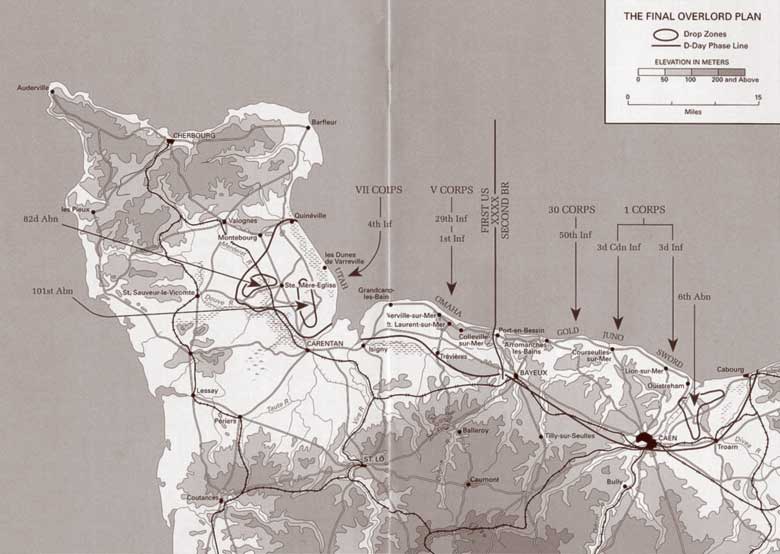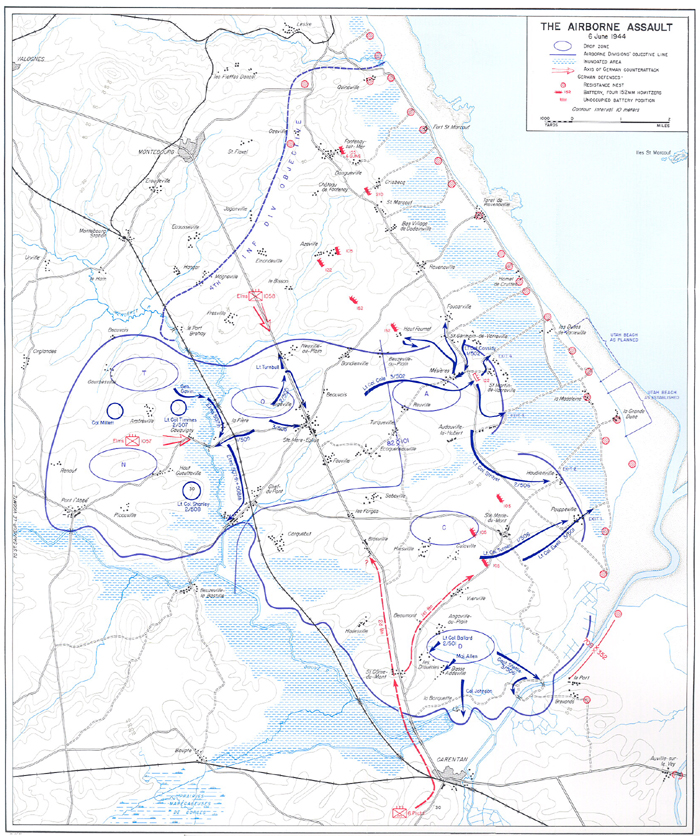|
Although planning for the operation began in the summer of 1942, the powerful offensive capability of German ground forces
in Western Europe, the need to contain the U-boat threat to the Atlantic convoy routes, the strategic decision to divert troops
and amphibious craft to the Mediterranean, and the ensuing difficulties of building up offensive forces in Britain, all combined
to prevent an invasion of France in the following year. By late 1943, however, detailed planning for the invasion had taken
place and significant forces and material had been gathered in Britain.
The naval component of the operation, code
named Operation NEPTUNE, comprised large numbers of warships, auxiliaries and landing craft. In all, Britain, Canada, and
the United States, as well as the navies-in-exile of France, the Netherlands, Norway, Poland and Greece, supplied 1,213 warships
for the invasion. Their main task was to provide shore bombardment firepower for the troops going ashore, to guard the transports,
and to conduct minesweeping and antisubmarine patrols on the flanks of the invasion corridor. The same navies also provided
4,126 amphibious craft, including a variety specialized landing craft, such as LSTs (Landing Ship, Tank), LCIs (Landing Craft,
Infantry), and LCTs (Landing Craft, Tank [Rocket]). More than 3,500 of these landing craft were actually used during the Normandy
Invasion. These amphibious craft would provide the crucial troop-carrying capacity to land the thousands of men, vehicles,
and artillery along the 50-mile wide target area in the Bay of the Seine.
The initial assault from landing ships and
craft was on a five-division front between the Orne River and the Cotentin Peninsula. The region was divided into five landing
beaches, code named (from west to east) Utah, Omaha, Gold, Juno and Sword. The first two beaches were assigned to the largely
American-manned Western Task Force and the other three were the responsibility of the British-dominated Eastern Task Force.
Although the Allies faced impressive German defenses, which were heavily fortified with concrete, wire, and other outworks,
they knew from experience that an initial lodgment was impossible to prevent. The overall battle itself, however, would be
decided by the ability of the Allies to reinforce their initially-weak beachhead by sea as compared to the easier movement
of German reinforcements by land. The Allies believed they would have the advantage in such a race since they enjoyed superior
concentration of force on the beaches--provided by the guns of the mobile warships--and virtually dominated the air over northern
France.

The Normandy beaches were chosen by planners because they lay within range of air cover, and were less heavily defended
than the obvious objective of the Pas de Calais, the shortest distance between Great Britain and the Continent. Airborne drops
at both ends of the beachheads were to protect the flanks, as well as open up roadways to the interior. Six divisions were
to land on the first day; three U.S., two British and one Canadian. Two more British and one U.S. division were to follow
up after the assault division had cleared the way through the beach defenses.

|

